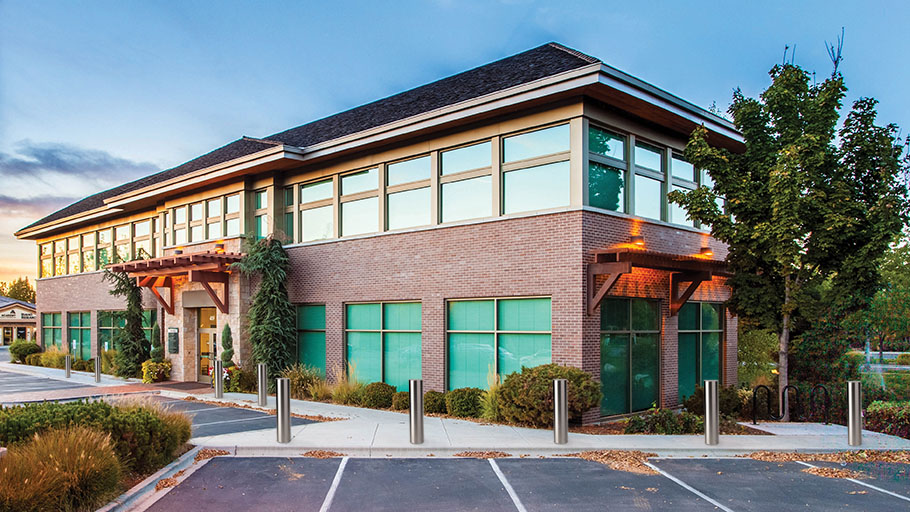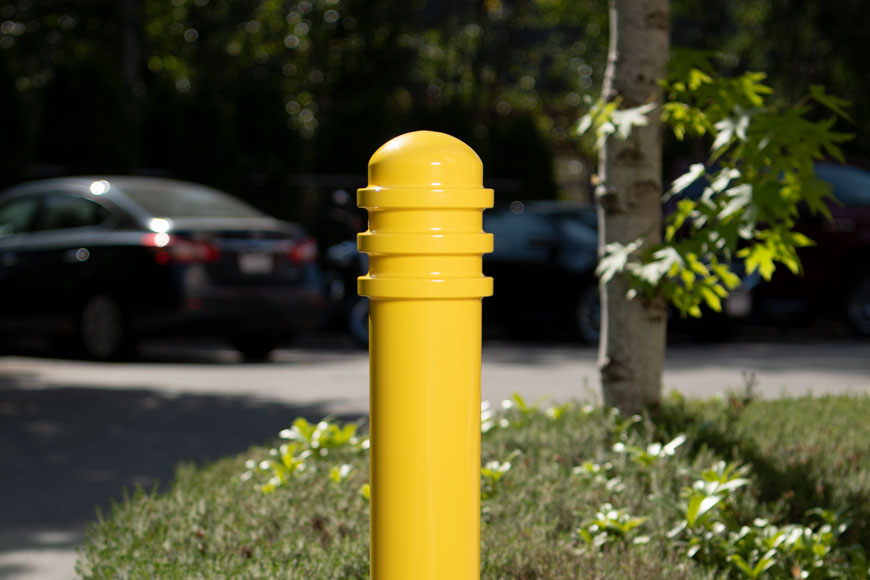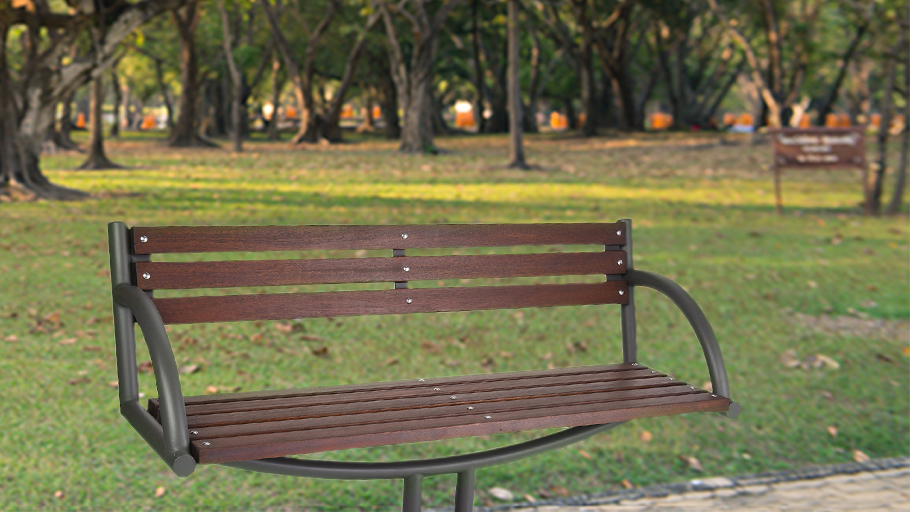A guide to choosing the right bollards for your project
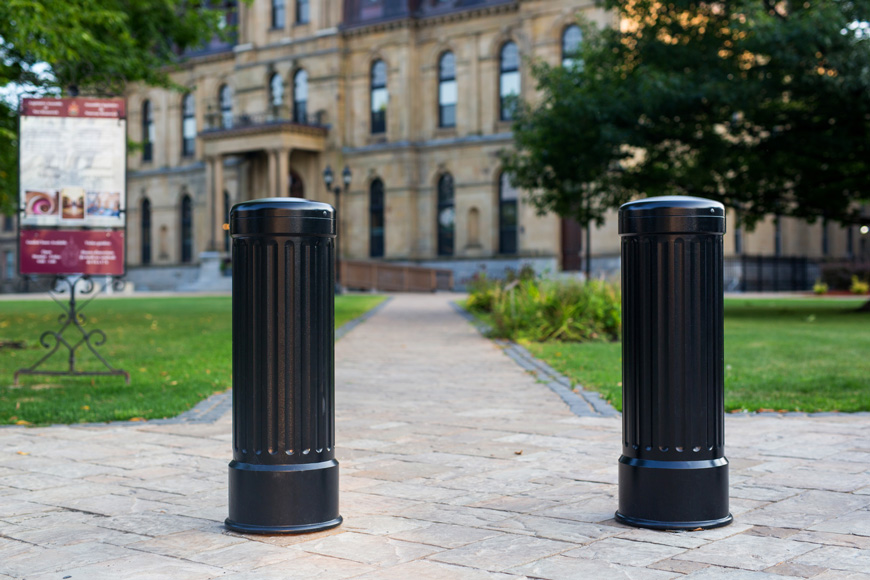
Bollards play a crucial role as visual guides and vehicle obstructions in various environments. Despite their unassuming appearance, these short posts come in a diverse range of styles and applications, encompassing everything from simple site furnishings to robust security barriers. As planners and architects explore the wide range of bollard options at their disposal, making the right selection is paramount for any development.
There are four major considerations when choosing the right type of bollard for a project:
- Vehicle access: should the bollard permanently or temporarily restrict vehicle access?
- Impact protection: what sort of impact, if any, should the bollard absorb?
- Site furnishing: how can the bollard help create a user-friendly site?
- Visual impact: as a visual guide, should the bollard be contrasting, complementary, or unobtrusive?
Vehicle access
Bollards are often placed to prevent vehicles from driving through an area, or to guide traffic along preferred routes. In many standard installations, the bollard placement is permanent. The bollard might be embedded in fresh concrete or affixed with bolts, anchors, or adhesives, but it will not be removed unless the site design changes, or the bollard is being replaced.
However, certain scenarios call for dynamic and flexible vehicle access control. In such installations, bollards are strategically employed to adapt to changing vehicle permissions based on factors such as seasonal variations, site usage, or vehicle type. Some examples of areas that can utilize variable access bollards for traffic management include the following:
- A road through the mountains that is closed every winter.
- A stadium that only permits maintenance or emergency vehicles to come close to the building.
- A street that only allows transit access or switches between use for parking or events.
- A parking space closed to all but delivery vehicles.
In all these applications, the versatility of removable bollards plays a crucial role in efficiently managing access based on changing requirements. Architects and site designers can select from a range of bollard options to meet the specific needs of each location, ensuring smooth traffic flow and enhanced security while adapting to varying access demands.
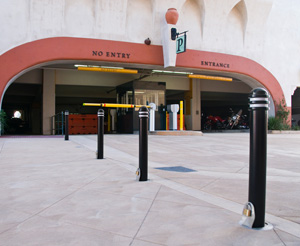
Removable bollards have receivers installed in concrete that allow a bollard to be secured in place when needed, but quickly unlocked and removed when access is required. Most removable bollards simply slide into the receiver and are padlocked once installed. For more ornate styles with bases wider than a standard receiver, a thick steel pin is threaded through both the bollard and a specialized internal mounting mechanism before being locked. Removable bollards come in a wide variety of designs so they can serve multiple purposes, like providing bicycle parking or lighting.
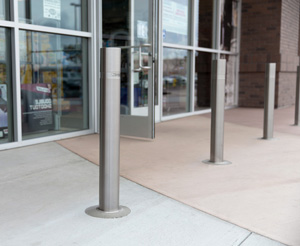
Telescoping or retractable bollards have a receptacle below grade. When access is required, they are unlocked and lowered into the ground, and do not require removal and storage. Retractable bollards are usually sleek and minimally decorated, but they come in a range of colors. There are both manual and automated versions of telescoping bollards; the automated versions need substantial mechanical infrastructure.
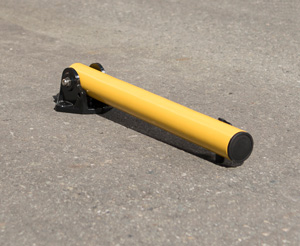
Collapsible or fold-down bollardsare hinged bollards that lie down on the ground surface to provide access to parking lanes, spots, or service access areas. The central post has a smaller diameter so that when they are collapsed, even low-slung vehicles can easily pass over them. Certain fold down styles come with bike-locking arms, which lie flat on the ground when folded.
Impact protection
Bollards have gained recognition for their ability to offer impact protection against vehicles. However, not all impact resistant bollards are designed to stop a vehicle in its tracks. There are various levels of impact resistance available, ranging from completely flexible bollards to robust anti-ram solutions.
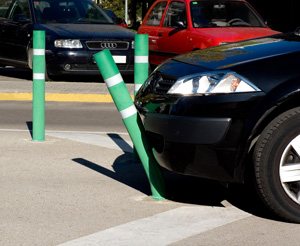
Flexible bollards are designed to bend upon vehicle impact. If hit or run over, they can bend all the way to the ground, then effortlessly spring back into their original position completely unscathed. These versatile features render them invaluable in various scenarios, serving as visual guides without posing any harm to vehicles that encounter them. When utilized as lane delineators, their pliability allows them to adjust when encountered by wide-turning trucks that require additional room to navigate effectively.

Break-away bollards, primarily found in rural access lanes, are wooden structures strategically designed to facilitate specific safety needs. Equipped with metal mountings that slightly protrude above the ground, these bollards serve dual purpose. First, they act as a deterrent for regular vehicles, discouraging unauthorized access or reckless driving. Second, their height is carefully calibrated to enable emergency vehicles to traverse over them securely in case of urgent situations, snapping the bollard in the process. Unlike flexible bollards, once run over, the entire bollard must be replaced.
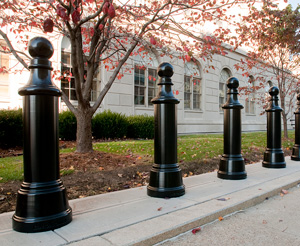
Decorative bollards are a great addition to any architectural or landscape setting, elevating the visual appeal of the area they adorn. While their primary function is to serve as stylish visual guides, it’s worth noting that many decorative bollards can be fitted over high-security cores when necessary, ensuring a versatile range of applications. Decorative bollards can strike a careful balance between aesthetics and functionality.
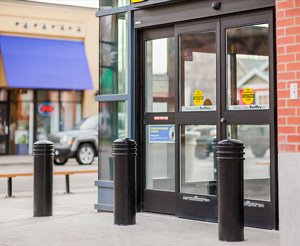
Security and safety bollards are intended to prevent collisions and protect people or property. Low-impact security bollards are installed in indoor spaces where they provide a security function such as protecting inventory or equipment, but against light, slow vehicles like cleaning machines. High-impact security bollards are designed to protect people and property in the event of a vehicle crash. They are often installed in front of store fronts, utility meters, patios, and other places where incursion is a danger. Security installations are usually steel pipe sunk into the substrate, which are then filled and surrounded with fresh concrete. Larger pipe diameters are more effective against larger vehicles at greater speeds. High-impact security posts are often covered to fit the aesthetic of the site and to prevent rusting.
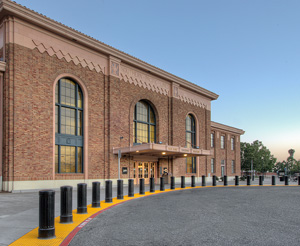
Crash-rated or anti-ram bollards are installed where there may be a threat of vehicle attack against a site. They are common around government buildings, large open areas, and in front of high-value small-item storefronts vulnerable to ram-raid robbery, such as jewelry or electronics stores. Crash-ratings are the result of testing; bollards are certified to stop cars of certain weights within a specified distance.
Bollards as Site Furnishings
Bollards showcase their versatility by serving as visual guides, protecting pedestrians and infrastructure, and by incorporating the functionality of essential site furnishings. While marking borders and boundaries, bollards remain an open part of the landscape, setting them apart from traditional barriers such as fences.
In various settings, bollards effectively communicate changes in the intended use of an area. At the entrance to a tranquil rural pathway, a row of bollards encourages hikers and cyclists to traverse the trail while blocking access to vehicles. Similarly, a circle of cast iron bollards adorned with chains gently suggests that people stay out of a garden, yet they allow access for retrieving a frisbee or cleaning up after a pet. Bollards also shine in designating spaces like patios, playgrounds, or seating areas, contributing to the overall functionality of the environment.
This visual guidance can encompass a range of architectural and decorative styles, either subtly enhancing the landscape or commanding attention in specific areas. Along bike routes, in parking lots, and in other busy traffic situations, high-visibility bollards become a preferred choice to create dedicated lanes for smooth traffic flow.
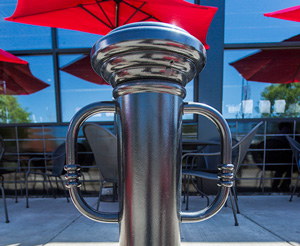
Bike parking bollards, one example of how bollards can take on specialized roles, offer secure locking features for bicycles. Available in various styles, from traditional ring-and-post bike parking to decorative or modern options, these bollards serve a dual purpose—controlling vehicle access while providing convenient bicycle parking. They come in permanent, removable, and collapsible mountings, offering flexibility for different needs.
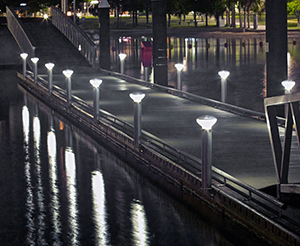
Outdoor lighting bollards provide additional safety and security at night. Solar bollards present an ideal solution. Rugged and weather-resistant bollards feature self-sustaining solar-powered illumination, eliminating the need for AC power. Although not collapsible, lit bollards come in fixed or removable options, adding to their versatility. AC bollards offer a highly efficient lighting solution, ideal for locations where solar power might not be viable, including covered walkways and densely-forested trails. While they rely on a connection to the power grid, they can be turned on irrespective of weather conditions or time of day, ensuring a consistent and reliable source of illumination.
Visual impact
Bollards, in addition to their practical functions, serve as captivating visual communication tools, with aesthetics often playing a pivotal role in selecting the most fitting style for a particular application.
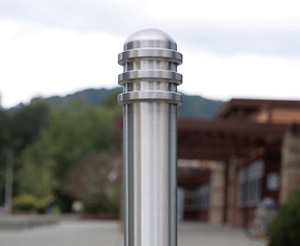
Modern architectural bollards embrace sleekness and lightweight design, featuring slim columnar profiles with subtle adornments. While black remains a popular color, stainless steel bollards have gained prominence in contemporary design. These modern fixtures can also be found as bike and solar bollards, offering versatility in impact protection levels. They can be installed permanently or provide flexible vehicle access through removable, retractable, or collapsible installations.
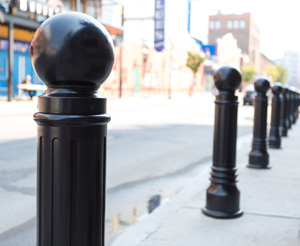
Decorative bollards exude a timeless charm, drawing inspiration from historical designs and seamlessly enhancing classic architectural styles. Originally seen on wharfs for securing boats, maritime bollards feature a short and narrow midsection designed to hold ropes securely. While they are still utilized in their original capacity, their distinctive profile has found adaptation in various settings. Another popular style reflects the tradition of repurposing decommissioned cannons as posts around buildings and in streetscapes. These decorative bollards often boast tapered or fluted bodies and distinctive caps, reminiscent of the cannon bollards that inspired them. Commonly finished in black, they create a striking contrast against the buildings they adorn. Classic styles are available in various applications, including low-impact, removable, security covers over steel pipe, and some even offer bike-locking variations.
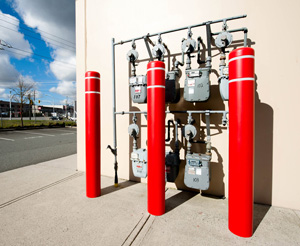
High-visibility bollards are favored choices for parking lots and areas surrounding utility poles where standing out is crucial. Safety yellow, available in powder-coated metal models or plastic bollard covers that easily slip over security pipes, ensures maximum visibility and safety.
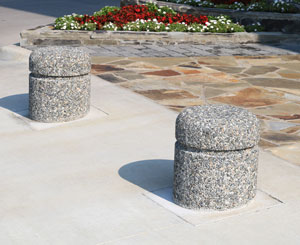
Concrete bollards boast a weighty and textured appearance, adding a rugged feel to any site. Textured concrete bollards featuring embedded stones offer visual interest with a natural theme. Fine concrete formed into familiar shapes such as boxes or spheres complements Brutalist or certain Modernist architectural styles.
Although these bollard styles each have their unique appeal, they can be customized to seamlessly blend with their surroundings. For instance, strip malls or store fronts often opt for bollards painted or powder-coated in the same color as the building’s exterior, creating a barrier without distracting from signs or displays. This strategic use of bollards ensures that they not only serve their intended purpose but also harmoniously contribute to the overall aesthetic of the site.
Large sites often require different groups of bollards to perform different functions. There might be places where high-impact security is needed, as well as places where vehicles have variable access; areas where bike parking is desirable and areas it would be inappropriate.
For any designer, architect, or city planner, aesthetic is an important consideration throughout. Once function at each location is determined, consistent or contrasting styles can be chosen to allow the bollards to fit well with their environment and with each other. Taking care to evaluate all the requirements for both form and function can help a site planner feel confident they’ve chosen the best bollards for their space.










